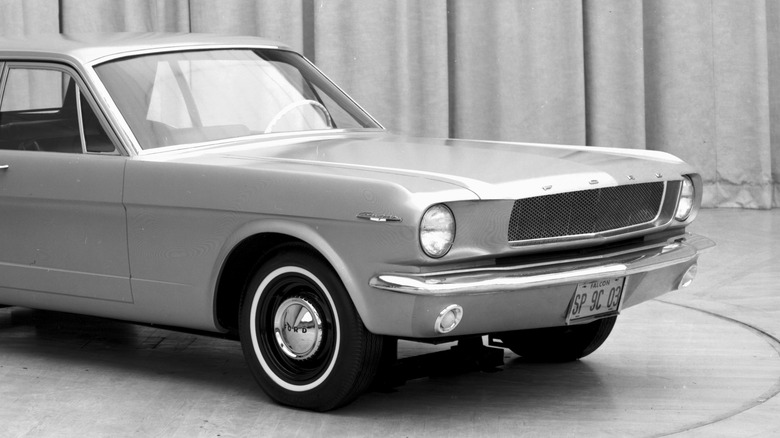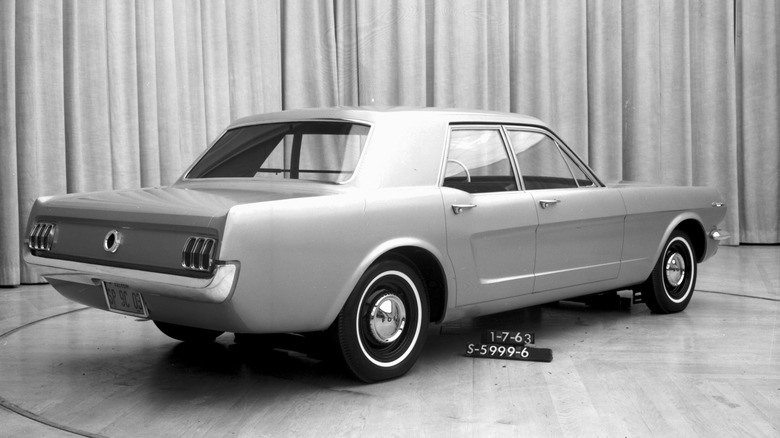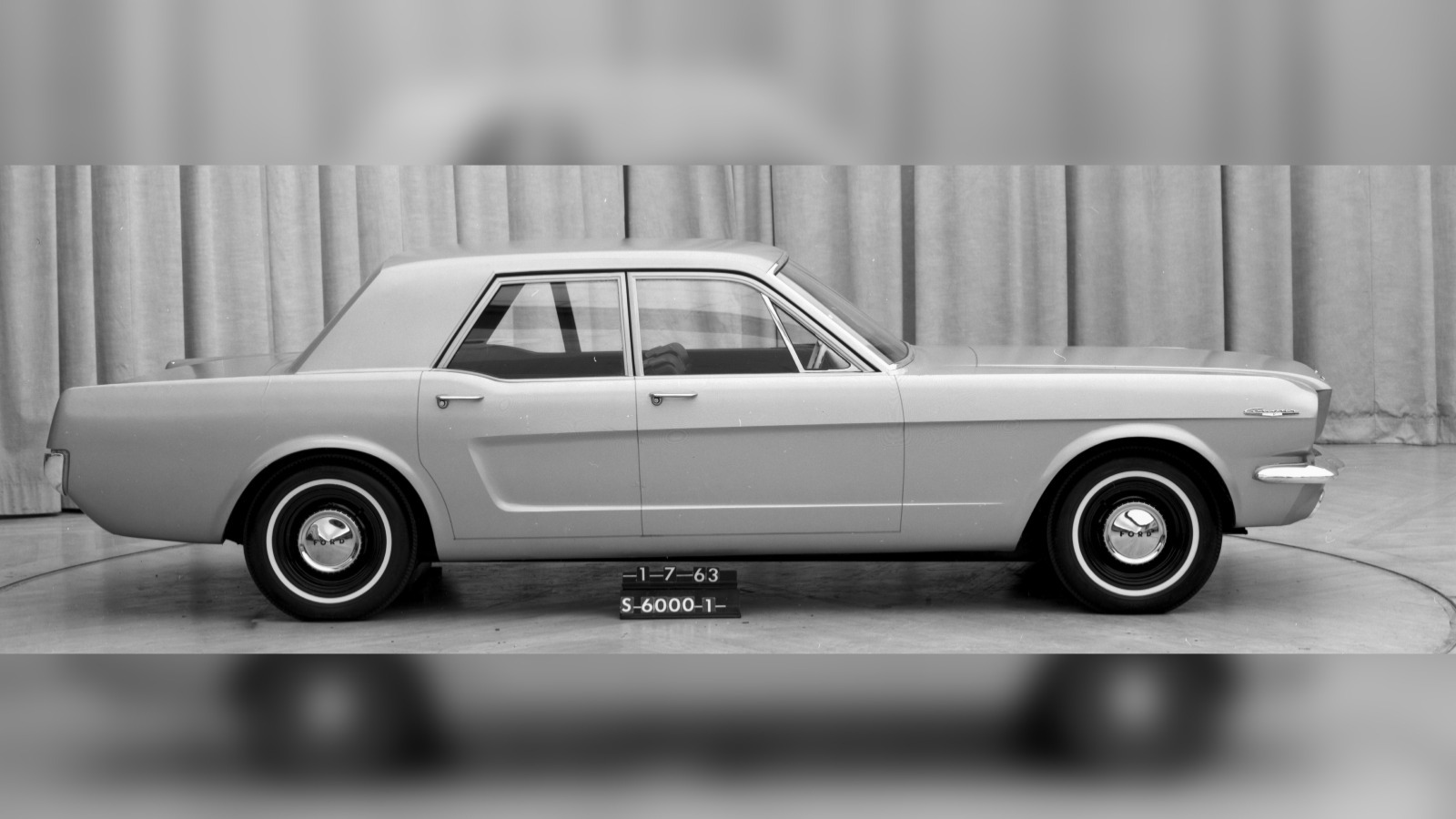Before The Mustang Mach-E, Ford Thought About Building This 4-Door Pony Car
When Ford attempted to replace its aging Fox-body Mustang with a new front-wheel drive alternative in the 1980s, fans responded with an outpouring of emotion against the decision, convincing Ford not to dare mess with its successful V8 "pony car" formula. The ill-fated replacement vehicle, developed in conjunction with Mazda, was released as a standalone model called the Probe.
Apparently, Ford wasn't content to learn from its mistakes, and in late-2019 the automaker introduced a new variation of the Mustang, the controversial Mach-E. To say that attaching the hallowed Mustang nameplate to an all-electric, four-door crossover SUV was polarizing would be the understatement of the year, but this time, Ford persevered. Unlike with the Probe, Ford wasn't discontinuing the classic Mustang architecture, but merely adding to the line.
The reality is that Ford was flirting with a four-door version of the Mustang as far back as 1965, mere months after the first-generation Mustang was introduced. Some enthusiasts are in the camp that a Mustang sedan may have been a contingency plan for Ford to recoup some of its investment cost of developing the new body style in the event that the sales of coupes, convertibles, and fastbacks failed to meet expectations. Other Ford fans saw a legitimate need for a compact four-door to replace the antiquated Falcon that was presently serving that purpose.
Supposedly, it was a full-size clay model
The concept car looked about how you would imagine — that is, a Mustang coupe riding on a longer wheelbase with an extra pair of doors tacked on. The only significant departure from the coupe's styling was a stretched C-pillar, presumably to give rear-seat passengers more space. Fun fact: a "Cougar" emblem can be seen on the front fender, a model name that Ford's Mercury brand later used for a luxury version of the Mustang that was introduced in 1967.
Some sources report that the concept (pictured) was only a full-size clay model and not an actual functioning vehicle, although it looks remarkably realistic to our eyes. In any case, the project was never advanced toward serious production consideration. For the originator of the pony car genre, the need to pivot never occurred. By the end of the 1965 model year, over 680,000 Mustangs were sold and at the close of the decade, that number ballooned to more than 2 million. As for Ford's compact sedan, a redesigned Falcon emerged in 1966 on a shortened version of the Fairlane's frame.
Nowadays, Ford only sells about 47,500 non-Mach-E Mustangs per year and quite frankly, the automotive world breathed a collective sigh of relief when the latest-generation S650 was announced. It would have been easy for Ford to justify axing its pony car altogether, following the lead of Chevy with the Camaro and Dodge with the Challenger. We're just grateful that the old-school Mustang has at least a few more years of life remaining, even if it does mean sharing the badge with an electric SUV.


